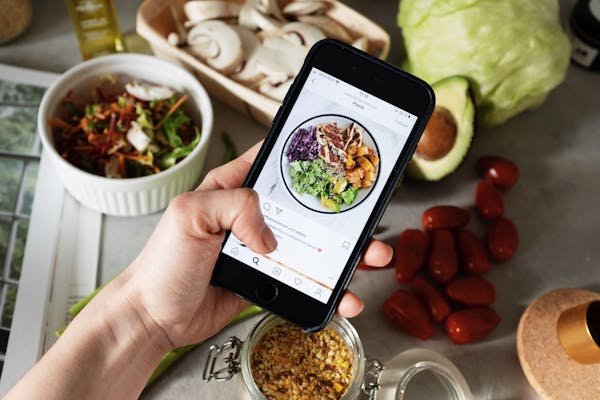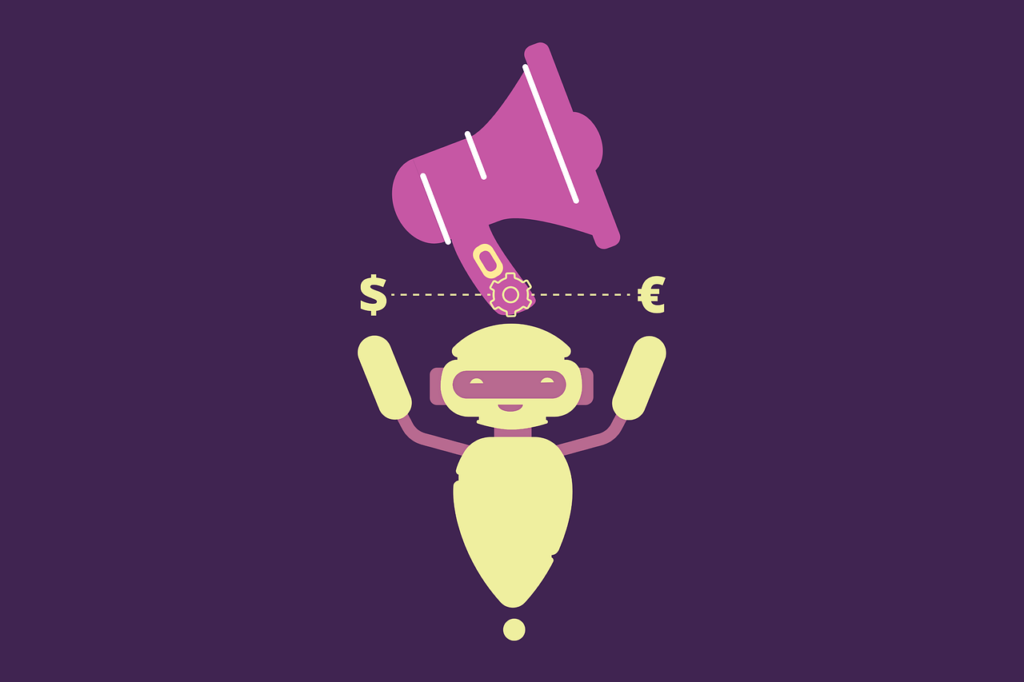In the fast-paced world of social media, timing is everything. Posting the right content at the right time can make a huge difference in engagement, reach, and overall success. An effective social media post schedule helps you stay organized, ensures consistent posting, and maximizes your content’s impact. Let’s dive into how you can create a social media post schedule that works for your brand.
Understanding Your Audience

Knowing your audience is the first step in creating an effective social media post schedule. Understanding who they are, what they like, and when they are most active will guide your scheduling decisions.
Identifying Your Target Audience
Start by identifying your target audience. Consider demographics such as age, gender, location, and interests. Use analytics tools provided by social media platforms to gain insights into your followers. Platforms like Facebook, Instagram, and Twitter offer detailed analytics that can help you understand your audience’s behavior.
To dig deeper into your audience’s preferences, create detailed buyer personas. These personas should include not just demographic information, but also psychographic data like their values, lifestyle, and purchasing behavior. Use surveys, customer interviews, and focus groups to gather this data. The more detailed your personas, the better you can tailor your content and posting schedule to meet their needs.
Engage with your audience directly through polls, surveys, and comments to get a sense of their preferences and habits. This direct feedback can provide valuable insights that aren’t always apparent through analytics alone.
Analyzing Audience Behavior
Once you have a clear picture of your target audience, analyze their behavior. Look at when they are most active on social media. This data is crucial for scheduling your posts at times when your audience is most likely to engage.
Dive into the specifics of their engagement patterns. Identify not just the times of day when they are active, but also the days of the week. For example, your audience might be more engaged during weekdays if your product is business-related, while a leisure brand might see higher engagement on weekends.
Use tools like Google Analytics, Facebook Insights, and Instagram Analytics to track user activity. These tools can provide detailed reports on when your posts receive the most engagement, allowing you to fine-tune your schedule.
Understanding Audience Segments
Segmenting your audience can lead to even more precise scheduling. Different segments of your audience may have varying preferences and behaviors. By identifying these segments, you can tailor your posting schedule to target each group more effectively.
Demographic Segmentation
Break down your audience by age, gender, income level, and education. Each demographic group might have different social media habits. For example, younger audiences may be more active on Instagram and TikTok, while older demographics might prefer Facebook and LinkedIn.
Analyze how each demographic segment interacts with your content. This can help you schedule posts at different times to cater to various groups. For instance, you might post job-related content during the morning for working professionals and lifestyle content in the evening for younger audiences.
Psychographic Segmentation
Psychographic segmentation involves understanding the lifestyle, values, and interests of your audience. This type of segmentation can be particularly useful for tailoring your content and posting times.
Create content themes that align with the interests and values of different segments. For example, if a portion of your audience is environmentally conscious, schedule posts about your sustainability efforts during times when they are most active. This strategy not only increases engagement but also builds a stronger connection with your audience.
Behavioral Segmentation
Behavioral segmentation focuses on user behaviors such as purchase history, usage patterns, and engagement levels. This data can provide insights into when your audience is most likely to engage with your content.
Identify patterns in how different segments of your audience interact with your brand. For instance, loyal customers might be more receptive to promotional content, while new followers might engage more with educational or introductory posts. Schedule your content accordingly to maximize its impact on each segment.
Using Advanced Analytics Tools
For a deeper understanding of your audience, consider using advanced analytics tools that offer more comprehensive insights. Tools like Sprout Social, HubSpot, and Socialbakers provide in-depth analysis of audience behavior, helping you refine your posting schedule.
Sprout Social
Sprout Social offers robust analytics features that allow you to track and analyze user engagement across multiple social media platforms. Use its reporting tools to identify peak engagement times and adjust your schedule accordingly.
Sprout Social also offers social listening features. These features enable you to monitor conversations about your brand and industry, providing insights into what your audience is interested in and when they are most active.
HubSpot
HubSpot’s analytics tools integrate with your overall marketing strategy, providing insights that go beyond social media. Use HubSpot to track user interactions across your website, email campaigns, and social media platforms. This holistic view helps you understand the entire customer journey and schedule posts that complement other marketing efforts.
HubSpot’s segmentation tools allow you to create highly targeted campaigns. Segment your audience based on various criteria and schedule posts that cater to the specific needs of each segment.
Socialbakers
Socialbakers offers AI-driven analytics that provide predictive insights into audience behavior. Use its analytics to forecast the best times to post based on historical data and trends.
Socialbakers also offers benchmarking tools that allow you to compare your performance with industry standards. Use these insights to adjust your posting schedule and stay ahead of the competition.
Engaging with Your Audience
Understanding your audience is not just about collecting data; it’s about actively engaging with them to foster a deeper connection. Engaging with your audience can provide real-time feedback and help you refine your social media strategy.
Direct Engagement
Respond to comments, messages, and mentions promptly. This interaction shows that you value your audience’s input and encourages further engagement. Use these interactions to gather insights into what your audience likes and dislikes.
Host live sessions, such as Q&As or webinars, to interact directly with your audience. These sessions can provide immediate feedback and help you understand your audience’s needs and preferences.
Community Building
Create and nurture communities around your brand. Use social media groups, forums, and exclusive content to build a sense of belonging among your followers. Engaging with these communities regularly can provide deeper insights into your audience’s behavior and preferences.
Monitor these communities to identify trends and topics that resonate with your audience. Use this information to inform your content strategy and scheduling.
By deeply understanding your audience through these strategic and actionable methods, you can create a highly effective social media post schedule that drives engagement, builds brand loyalty, and supports your overall business goals.
Setting Goals for Your Social Media Posts
Before you start scheduling, it’s important to set clear goals for your social media posts. Having specific objectives will help you create content that aligns with your brand’s mission and resonates with your audience.
Defining Your Objectives
What do you want to achieve with your social media posts? Your goals could range from increasing brand awareness and driving website traffic to generating leads and boosting sales. Clearly defining your objectives will help you create focused and effective content.
Consider short-term and long-term goals. Short-term goals might include increasing engagement on a particular post, while long-term goals could involve growing your follower base over several months. Align your content strategy with these goals to ensure consistency and direction.
Measuring Success
Determine how you will measure the success of your social media posts. Use key performance indicators (KPIs) such as likes, comments, shares, click-through rates, and conversions. Tracking these metrics will help you understand what works and what doesn’t, allowing you to refine your strategy over time.
Use analytics tools to monitor your progress and adjust your goals as needed. Regularly reviewing your performance will keep you on track and ensure your social media efforts are effective.
Creating a Content Calendar
A content calendar is an essential tool for organizing your social media posts. It helps you plan ahead, maintain consistency, and ensure a balanced mix of content types.
Choosing the Right Tools
There are many tools available to help you create and manage your content calendar. Tools like Hootsuite, Buffer, and Trello offer features for scheduling posts, collaborating with team members, and tracking performance.
Choose a tool that fits your needs and budget. Look for features such as drag-and-drop functionality, integration with social media platforms, and analytics reporting. The right tool can streamline your scheduling process and make managing your social media posts easier.
Planning Your Content
Start by planning your content themes and topics. Consider creating a mix of promotional, informational, and entertaining content to keep your audience engaged. For example, you might schedule product announcements, industry news, tips and tricks, behind-the-scenes content, and user-generated content.
Map out your content for the upcoming weeks or months, ensuring a balanced distribution of content types. This planning will help you avoid last-minute scrambling and ensure a consistent posting schedule.
Timing Your Posts
Timing is crucial when it comes to social media. Each platform has peak times when users are most active. To maximize engagement, schedule your posts to go live during these times. Use the insights from your audience analysis to determine the best times to post on each platform.
For example, studies suggest that Instagram posts perform best when shared during off-work hours, such as early morning, lunch breaks, and evenings. LinkedIn, on the other hand, tends to see higher engagement during business hours, especially mid-week. Tailor your schedule to these patterns to reach your audience when they are most likely to interact with your content.

Crafting Engaging Content
The success of your social media schedule hinges on the quality of your content. Engaging, relevant, and well-crafted posts will resonate with your audience and drive interaction.
Creating High-Quality Visuals
Visual content is incredibly important on social media. High-quality images, videos, and graphics can capture attention and encourage users to engage with your posts. Invest in good design tools or work with a designer to create visually appealing content.
To strategically implement high-quality visuals, ensure consistency in your visual branding. Use a cohesive color palette, consistent fonts, and similar design elements across all your social media posts. This creates a recognizable visual identity that strengthens brand recall.
Leverage user-generated content by encouraging your audience to share photos or videos of themselves using your product. Feature the best submissions on your social media channels. This not only provides high-quality, authentic visuals but also fosters a sense of community and loyalty among your followers.
Writing Compelling Captions
Your captions are just as important as your visuals. Craft compelling captions that grab attention, convey your message clearly, and include a call-to-action (CTA). Encourage your audience to like, comment, share, or visit your website.
For strategic caption writing, start with a hook that immediately grabs attention. This could be a question, a bold statement, or an intriguing fact. Follow up with concise, informative content that adds value to your audience. End with a clear and engaging CTA, guiding your audience on what to do next.
Use storytelling to make your captions more relatable and engaging. Share behind-the-scenes stories, customer testimonials, or the journey of your brand. Storytelling can create an emotional connection with your audience, making your content more memorable.
Utilizing Hashtags and Tags
Hashtags and tags are powerful tools to increase the reach of your posts. They help categorize your content and make it discoverable to a broader audience.
To strategically use hashtags, research and select a mix of popular, niche, and branded hashtags relevant to your content. Popular hashtags can increase visibility, niche hashtags can target specific audiences, and branded hashtags can promote your campaigns and encourage user participation.
Create and promote your own branded hashtags. Encourage your audience to use them when posting about your brand. Monitor these hashtags to engage with user-generated content and showcase it on your social media channels.
Tagging relevant accounts can also boost visibility and engagement. Tag influencers, partners, or other brands related to your content. This not only increases the chances of your post being seen by a larger audience but also fosters relationships with key players in your industry.
Incorporating Different Content Types
Variety is key to keeping your audience engaged. Incorporate different types of content into your social media strategy to cater to diverse preferences and keep your feed interesting.
Educational Content: Share tips, how-tos, and informative posts that provide value to your audience. This positions your brand as an authority in your industry and builds trust with your followers.
Entertaining Content: Use humor, memes, and lighthearted posts to entertain your audience. Entertaining content can increase engagement and make your brand more relatable.
Promotional Content: Promote your products or services through offers, discounts, and announcements. Ensure promotional content is balanced with other types of content to avoid appearing too sales-focused.
User-Generated Content: Encourage your followers to create and share content related to your brand. Featuring user-generated content not only provides you with authentic visuals but also boosts engagement and loyalty.
Behind-the-Scenes Content: Show the human side of your brand by sharing behind-the-scenes content. This could be anything from office tours to team member spotlights. Behind-the-scenes content makes your brand more relatable and transparent.
Interactive Content: Create polls, quizzes, and interactive stories to engage your audience actively. Interactive content encourages participation and can provide valuable insights into your audience’s preferences.
Leveraging Influencer Collaborations
Collaborating with influencers can significantly enhance the reach and engagement of your social media posts. Influencers have established credibility and a dedicated following, which can help amplify your brand’s message.
When selecting influencers, choose those whose values align with your brand and who have an engaged and relevant audience. Collaborate on content that feels authentic to both the influencer and your brand. This authenticity is key to successful influencer marketing.
Plan and coordinate with influencers to schedule posts that align with your overall social media strategy. Use their content to fill gaps in your content calendar, ensuring a consistent posting schedule without compromising quality.
Using Data-Driven Content Strategies
Use data and analytics to inform your content strategy. Track the performance of different types of content to understand what resonates most with your audience.
A/B testing can be particularly useful. Test different variations of your posts to see which ones perform better. Experiment with different visuals, captions, CTAs, and posting times. Use the insights gained from these tests to refine your content strategy and improve engagement.
Regularly review and analyze your social media metrics. Look for patterns and trends in your engagement rates, click-through rates, and conversion rates. Use this data to adjust your content strategy and ensure it aligns with your audience’s preferences and behaviors.
Engaging with Your Audience
Scheduling posts is just one part of the equation. Engaging with your audience is equally important to build a strong social media presence. Effective engagement strategies foster a deeper connection with your followers, encourage loyalty, and can significantly enhance the overall success of your social media efforts.
Responding to Comments and Messages
Make it a priority to respond to comments and messages promptly. Engaging with your audience shows that you value their input and fosters a sense of community around your brand. Whether it’s a question, compliment, or criticism, taking the time to respond can significantly enhance your relationship with your followers.
For strategic engagement, set aside dedicated time each day to monitor and respond to interactions on your social media platforms. Use tools like Hootsuite or Sprout Social to streamline this process by aggregating comments and messages from all your social media accounts into a single dashboard.
Create a response strategy that outlines how to handle different types of interactions. For example, have templates ready for frequently asked questions, while also allowing room for personalized responses to unique inquiries. This ensures consistency while still providing a personal touch.
Encouraging User-Generated Content
User-generated content (UGC) is a powerful way to build trust and authenticity. Encourage your audience to create and share content related to your brand. Create campaigns or contests that motivate your followers to share their experiences with your products or services. Feature the best UGC on your social media channels to show appreciation and inspire others to participate.
To strategically encourage UGC, launch specific campaigns that invite users to share their stories, photos, or videos using a unique hashtag. Offer incentives such as giveaways, discounts, or features on your official page to motivate participation.
Create a seamless process for collecting and showcasing UGC. Use tools like TINT or Taggbox to curate user-generated content effectively. Ensure you always credit the original creators, which not only respects their work but also encourages more followers to contribute.
Hosting Live Sessions

Live sessions, such as Q&As, webinars, and live tutorials, are an excellent way to engage with your audience in real-time. They provide a platform for direct interaction, allowing you to address questions, share insights, and build a more personal connection with your followers.
For strategic implementation, plan your live sessions around topics that interest your audience. Promote the sessions in advance to build anticipation and ensure high attendance. Use interactive features during the live session, such as polls and questions, to keep the audience engaged.
After the live session, analyze the feedback and interactions to understand what resonated with your audience. Use these insights to improve future live sessions and tailor your content strategy.
Building and Nurturing Communities
Creating and nurturing communities around your brand can lead to higher engagement and loyalty. Use social media groups, forums, and exclusive content to build a sense of belonging among your followers. Engaging with these communities regularly can provide deeper insights into your audience’s behavior and preferences.
For strategic community building, start by identifying platforms where your audience is most active. Create exclusive groups or forums on these platforms and invite your most engaged followers to join. Provide value through exclusive content, early access to products, or special events to keep the community active and engaged.
Assign community managers to monitor and engage with these groups. They can facilitate discussions, share updates, and address any concerns promptly. Regularly gather feedback from the community to understand their needs and preferences better.
Running Interactive Campaigns
Interactive campaigns such as polls, quizzes, and contests can significantly boost engagement. They not only make your content more engaging but also provide valuable insights into your audience’s preferences and opinions.
To strategically run interactive campaigns, align them with your overall marketing goals. For example, if you’re launching a new product, create a quiz that educates your audience about its features. Use the data collected from these campaigns to tailor your marketing efforts.
Promote these campaigns across all your social media channels to maximize participation. Analyze the results to understand what types of interactions resonate most with your audience and refine your strategy accordingly.
Leveraging Influencers for Engagement
Collaborating with influencers can amplify your engagement efforts. Influencers have established credibility and a loyal following, which can help drive interaction with your brand.
Strategically choose influencers whose audience aligns with your target demographic. Engage them in campaigns that encourage their followers to interact with your brand, such as challenges, giveaways, or live sessions. Ensure the collaboration feels authentic and aligns with your brand values to maintain credibility.
Track the performance of these collaborations using analytics tools to measure engagement levels. Use these insights to optimize future influencer partnerships and enhance your engagement strategy.
Using Analytics to Enhance Engagement
Analytics are crucial for understanding how well your engagement strategies are working. Regularly review engagement metrics such as likes, comments, shares, and follower growth to gauge the effectiveness of your efforts.
Strategically use analytics tools to identify trends and patterns in your engagement data. Look for posts that receive high engagement and analyze what makes them successful. Use these insights to replicate successful strategies and refine less effective ones.
A/B testing different types of content and engagement tactics can also provide valuable insights. Test variables such as posting times, content formats, and CTAs to see what drives the most engagement. Use the results to continually improve your engagement strategy.
Conclusion
Creating an effective social media post schedule is a critical component of a successful digital marketing strategy. By understanding your audience, setting clear goals, and crafting engaging content, you can ensure that your social media efforts resonate with your target audience and drive meaningful engagement.
Engaging with your audience goes beyond just posting content; it involves responding to comments and messages, encouraging user-generated content, hosting live sessions, building and nurturing communities, running interactive campaigns, leveraging influencers, and using analytics to continually refine your approach.
Read Next:
- Creating Downloadable Resources for Link Building
- Optimizing Infographics for Educational Websites
- Mortgage SEO: How to Stand Out in a Competitive Market
- SEO for Online Trading Platforms
- Insurance SEO: Best Practices and Strategies





















Comments are closed.